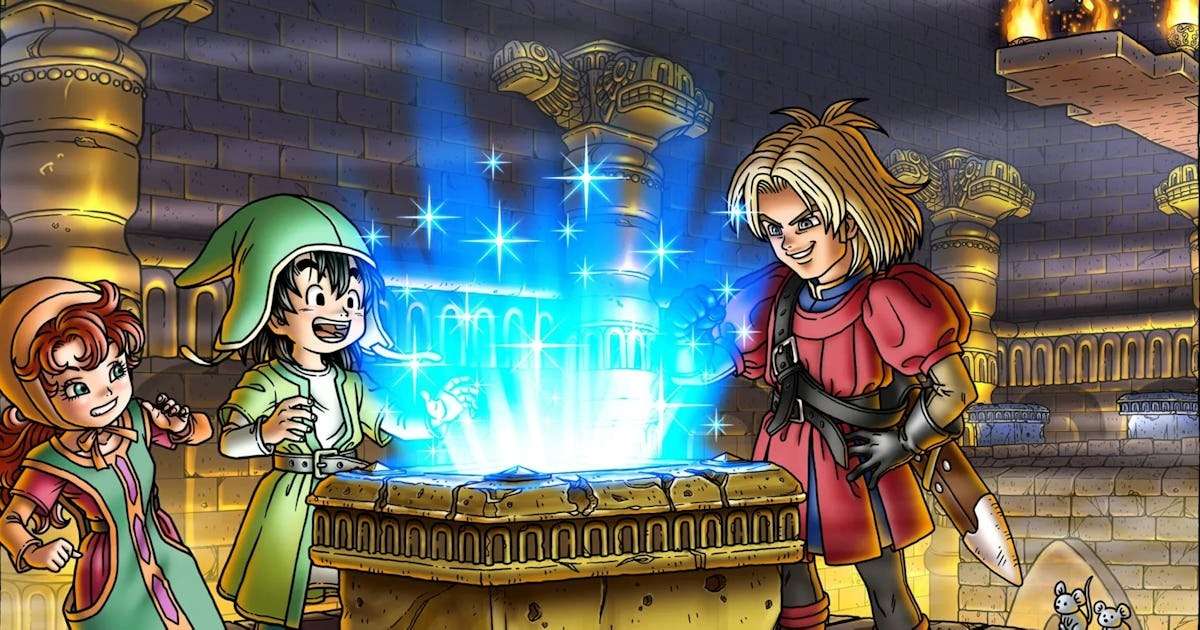Dragon Quest I: A Timeless RPG Masterpiece That Shockingly Holds Up Decades Later
Popular Now
 EA SPORT FC 25
EA SPORT FC 25
 NBA 2K24
NBA 2K24
 Minecraft
Minecraft
 Call of Duty
Call of Duty
 Black Myth: Wukong
Black Myth: Wukong
 Candy Crush Saga
Candy Crush Saga
 BeamNG.drive
BeamNG.drive
 Roblox
Roblox
 Schedule I
Schedule I
 Rust
Rust  In the ever-evolving landscape of video games, where cutting-edge graphics and complex narratives frequently redefine player expectations, it’s rare for a foundational title to retain its original charm and playability. Yet, Dragon Quest I, the progenitor of the beloved JRPG series, defies these expectations with remarkable grace. Released in 1986 in Japan as Dragon Warrior in North America, this seminal title from Enix (now Square Enix) stands as a testament to elegant game design, proving that true quality transcends technological limitations and continues to offer a compelling experience for modern gamers.
In the ever-evolving landscape of video games, where cutting-edge graphics and complex narratives frequently redefine player expectations, it’s rare for a foundational title to retain its original charm and playability. Yet, Dragon Quest I, the progenitor of the beloved JRPG series, defies these expectations with remarkable grace. Released in 1986 in Japan as Dragon Warrior in North America, this seminal title from Enix (now Square Enix) stands as a testament to elegant game design, proving that true quality transcends technological limitations and continues to offer a compelling experience for modern gamers.
For many, the mention of classic RPGs conjures images of antiquated interfaces and frustrating mechanics. However, Dragon Quest I’s enduring appeal lies precisely in its deceptively simple yet profoundly effective design principles. Unlike some of its contemporaries, which could be obtuse or overly punishing, Dragon Quest I adopted an accessible approach that made the genre palatable to a wider audience. This clarity of vision is a cornerstone of its lasting legacy and a significant factor in why it remains surprisingly enjoyable today.
The Genesis of a Genre: Simplicity as Strength
Dragon Quest I introduced many conventions that would become staples of the JRPG genre. Its top-down world map, turn-based combat system, menu-driven interactions, and quest for a legendary hero to defeat an ultimate evil (the Dragonlord) set a powerful precedent. What’s truly astonishing is how these fundamental mechanics, often stripped bare in other early titles, are executed with such polish in Dragon Quest I. There’s a directness to its gameplay loop that eschews unnecessary complexity, focusing instead on the core tenets of exploration, progression, and combat.
- Streamlined Combat: The turn-based battles are straightforward. Players select actions like Attack, Spell, or Item. There’s no convoluted active-time battle system or intricate stat management; success hinges on strategic item usage, understanding enemy weaknesses, and managing resources effectively. This simplicity makes combat quick and engaging, never bogging down the pacing.
- Clear Progression: Leveling up in Dragon Quest I is a satisfying, tangible experience. Each gain in strength, agility, and magic feels earned and impactful, directly contributing to the player’s ability to tackle tougher monsters and delve deeper into dangerous dungeons. This clear feedback loop is a powerful motivator.
- Minimalist Narrative: The story, while archetypal, is delivered with concise efficiency. The hero, a descendant of the legendary Erdrick, is tasked by the King of Tantegel to rescue Princess Gwaelin and defeat the Dragonlord. This straightforward premise allows players to focus on the adventure without getting lost in overly dense lore, a refreshing change of pace even for those accustomed to modern, cinematic narratives.
Pioneering Influence and Lasting Impact on the Gaming Industry
The historical significance of Dragon Quest I cannot be overstated. It was instrumental in popularizing console role-playing games in Japan, paving the way for countless successors, including its own massively successful series and other influential franchises like Final Fantasy. Its unique blend of medieval fantasy, charming character designs by Akira Toriyama (of Dragon Ball fame), and memorable musical scores by Koichi Sugiyama created an immersive experience that resonated deeply with players.
Even decades later, its influence can be seen in modern indie RPGs that embrace pixel art and classic mechanics, as well as in the continued evolution of its own mainline series which, despite significant graphical and mechanical advancements, still retains the core ‘feel’ established in the first game. For developers and enthusiasts studying game design history, Dragon Quest I offers invaluable insights into effective user experience and narrative economy.
Modern Playability: Why Dragon Quest I Still Captivates Today
Perhaps the most compelling argument for Dragon Quest I’s enduring quality is its surprising modern playability. While contemporary gamers might initially be put off by its 8-bit aesthetic or lack of modern conveniences, the game quickly reveals its timeless design virtues. The challenge is fair, the grind is manageable (especially in modern re-releases that often reduce it slightly), and the sense of accomplishment from overcoming obstacles is genuinely rewarding. Players are encouraged to explore, converse with NPCs for clues, and carefully manage their gold and inventory, fostering a real sense of adventure and resourcefulness.
Furthermore, the simplicity of its mechanics means that the game is incredibly easy to pick up and understand. There’s no lengthy tutorial or complex control scheme to master. Within minutes, players are out in the world, fighting slimes and embarking on their grand quest. This accessibility makes it an excellent entry point for those new to classic RPGs or for veterans looking to revisit a foundational piece of their gaming heritage without the frustration often associated with older titles. The game respects the player’s intelligence, providing just enough information to guide them without holding their hand excessively, a trait many modern games could learn from.
Value and Accessibility in the Current Gaming Ecosystem
In today’s robust gaming market, Dragon Quest I is readily available across multiple platforms, often bundled with its sequels or as standalone mobile ports. These versions frequently come with quality-of-life improvements, such as faster movement, improved translation, and better menu navigation, enhancing the experience without diluting its core integrity. This accessibility ensures that new generations of players can discover its magic without needing original hardware, making it a viable and attractive option for budget-conscious gamers or those seeking a nostalgic trip.
For those interested in the economics of gaming, investing time in a classic like Dragon Quest I offers a high return in terms of understanding genre evolution and appreciating foundational design. It’s a masterclass in how to create a compelling, long-lasting experience with limited resources, a lesson that remains pertinent in the booming indie game development scene.
Conclusion: A Legacy That Shines Brighter with Age
Dragon Quest I isn’t just a historical artifact; it’s a living, breathing testament to the power of fundamental game design. Its elegant simplicity, clear progression, and pioneering influence have cemented its place in gaming history. For players looking for a refreshing departure from today’s often over-complicated blockbusters, or for those simply wishing to understand the roots of the JRPG genre, Dragon Quest I offers an experience that holds up not merely as a curiosity, but as a genuinely enjoyable and compelling adventure. It’s a game that proves that innovative design and heartfelt execution truly create timeless experiences, continuing to surprise and delight players decades after its initial release. Its legacy is not just about what it started, but how remarkably well its original vision continues to resonate in the modern gaming landscape, proving that some masterpieces truly are eternal.







